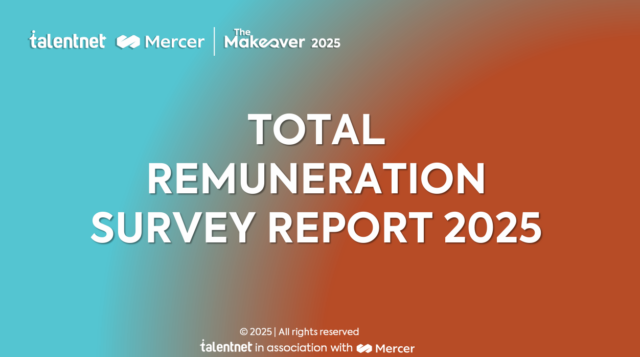How Data-Driven Benefits Transform Employee Retention In Manufacturing Industry

May 20, 2025
Last updated on Oct 9, 2025
Factory turnover in Vietnam costs manufacturers 3-5 months of worker salary for every replacement. With 65% of manufacturing companies reporting employee retention in the manufacturing industry as their biggest challenge, finding effective solutions is critical for sustained growth.

Key takeaways
- Factory turnover costs 3-5 months of worker salary per replacement, creating significant profit margin erosion in Vietnam’s manufacturing sector where replacement expenses can reach 85% of annual wages
- Strategic employee retention strategies targeting what employees value most—competitive pay, family support, and career growth—can reduce turnover by one-third, with companies saving $537,000 to $1 million annually
- Workforce analytics enable precise benefit targeting, turning retention from guesswork into measurable business strategy with clear ROI
- Continuous data monitoring through surveys and HR metrics allows proactive retention management that adapts to changing workforce needs
When 15-20% of factory workers leave within their first year, the financial damage extends far beyond hiring costs. Vietnam’s manufacturing turnover rates have reached 24% industry-wide, with garment factories seeing rates as high as 36% annually. Forward-thinking leaders are implementing proven employee retention strategies using workforce data to design targeted benefits that keep employees engaged and reduce costly turnover cycles.
What is the real cost of losing factory workers
The numbers tell a stark story about turnover’s impact on your bottom line. Vietnam’s manufacturing hubs experience turnover rates reaching 24% across industries, with southern manufacturing zones seeing 15-20% of workers leave within twelve months. These aren’t just statistics—they represent real financial consequences that directly affect profitability. The financial impact breakdown:
- Replacement costs: 3-5 months of worker salary (World Bank research)
- True total cost: Up to 85% of annual salary including all related expenses
- Hidden costs: Production disruptions, quality impacts, training investments
The workforce has fundamentally changed its priorities, creating new retention pressures. A 2024 Vietnam survey reveals that 58.7% of workers rank salary and benefits packages as their top job priority, far ahead of career growth opportunities at 17.5% or flexible work arrangements at under 13%. Even more concerning for business continuity, 64.8% of Vietnamese workers plan to change jobs within six months, showing a workforce ready to move when expectations aren’t met.
Employee engagement emerges as the critical factor separating successful retention from costly churn. Manufacturing studies show only 25% of employees are actively engaged at work, while disengaged workers are far more likely to quit. Companies with engaged workforces see turnover rates up to 70% lower than those struggling with disengagement, making employee satisfaction essential for financial stability.
|
Turnover isn’t just a hiring problem—it’s a profit leak consuming 3-5 months of salary per departed worker, making retention strategies essential financial management tools for manufacturing leaders. |

How to use data to enhance employee retention strategies
The most successful manufacturers use workforce analytics as their competitive advantage, transforming intuition-based decisions into evidence-backed strategies that deliver measurable ROI on retention investments. Understanding how to reduce employee turnover in manufacturing requires systematic data collection and analysis.
Use data to design competitive compensation & benefits packages
“Employees demand good compensation and stable careers and tailored policies to their personal needs. The key to attracting and retaining talents lies in the ability of businesses to boldly carve a new path, and introduce a diverse range of benefits that fit the new demands of employees.” – Head of Human Capital Solutions at Talentnet.
Effective compensation strategy starts with comprehensive market analysis. Regular benchmarking against industry and regional data ensures your packages remain competitive for talent attraction and retention. This process goes beyond basic wage comparisons to examine internal pay structures for fairness and motivational impact across different roles and experience levels.
Compensation transparency and internal equity significantly influence retention decisions, particularly among high-performing employees with external opportunities. The data consistently shows that perceived fairness matters as much as absolute compensation levels.
Employee feedback provides crucial insight for benefit optimization. Regular workforce surveys reveal which benefits employees value most, enabling you to design packages that resonate with your specific demographics rather than relying on industry assumptions.
Comprehensive benefits surveys help organizations create targeted offerings based on workforce data analysis, moving beyond standard packages to create differentiated value propositions that address specific employee priorities.
Use workforce data to implement effective family-friendly policies
Demographic analysis reveals significant opportunities for targeted retention improvements. Examining your workforce composition—particularly employees with young children and single-parent households—helps you assess the potential impact of family-supportive benefits like childcare assistance. This data-driven approach ensures investments align with actual workforce needs rather than assumptions.
Key metrics to track:
- Workforce demographics (% with young children, family status)
- Post-implementation turnover rates
- Absenteeism patterns
- Productivity changes
The business case for family-friendly policies becomes clear through measurable outcomes. Companies tracking turnover rates, absenteeism patterns, and productivity changes can demonstrate clear ROI to leadership.
“Opening a kindergarten has helped our factories cut unplanned absenteeism by 20%. We have also seen a significant decrease in monthly worker turnover compared to our other factory without a kindergarten.”
– Eric Lee, HR Manager at Taekwang Vina Manufacturing –
Real-world examples prove the value of data-driven family support. Nalt Enterprise and Evervan Factory both invested in childcare facilities and achieved measurable retention improvements that justified initial costs through reduced hiring and training expenses.
Use performance and feedback data to build engaging career development pathways
Skills gap analysis provides the foundation for retention-focused development programs. By analyzing performance data, production requirements, and strategic business objectives, you can identify current skill deficiencies and future talent needs. This analysis enables targeted training programs that benefit both employee growth and business capability development.
Career pathway mapping represents a high-impact, low-cost retention tool. Clearly communicating advancement opportunities and tracking internal promotion rates helps correlate development investments with retention outcomes. Research shows companies offering professional development report 34% higher retention rates than those without structured growth programs.
Gathering employee feedback on career goals ensures program relevance and value. Input on desired development support and advancement aspirations helps align training investments with workforce motivations, transforming development from a cost center into a strategic retention lever that builds both skills and loyalty.
Use HR analytics for continuous monitoring and refinement of retention strategies
Real-time feedback systems enable proactive retention management before problems become departures. Regular pulse surveys, stay interviews, and comprehensive exit interview analysis provide ongoing insights into benefit effectiveness and workplace satisfaction levels that traditional annual reviews miss.
Essential HR metrics to monitor:
- Turnover rates by department/demographic
- Benefit uptake rates
- Employee satisfaction scores
- Internal promotion rates
HRIS platforms and analytics tools create the infrastructure for systematic retention tracking. Companies can leverage total remuneration surveys to benchmark their offerings while monitoring key metrics like turnover rates by department and demographic group, benefit uptake rates, and employee satisfaction scores to identify trends before they become critical problems.
Predictive analytics represents the cutting edge of retention strategy. These insights help identify potential departures and enable proactive adjustments to retention strategies based on evolving needs.

How do smart benefits improve retention results
Leading manufacturers have moved beyond theoretical benefits to document concrete financial returns from strategic retention investments. These real-world case studies demonstrate how ideas for employee retention in manufacturing industry translate directly into bottom-line improvements.
Nalt Enterprise achieved remarkable results through on-site childcare. The textile manufacturer experienced a one-third reduction in staff turnover after opening their childcare center. Since replacing a worker costs 85% of their annual salary, this turnover reduction generated cost savings that exceeded the facility investment within the first year of operation.
Evervan Factory provides even more compelling financial evidence. The footwear manufacturer in Bình Dương province invested in an on-site kindergarten and cut worker turnover by more than half—from 4.1% monthly to approximately 2%. The company calculates annual savings of ₫12.5 billion (~$537,000) in improved productivity and reduced training costs, with these savings nearly equaling the one-time facility construction cost.
Taekwang Vina‘s comprehensive approach demonstrates multiple benefit streams from family-friendly policies. The 35,000-employee footwear manufacturer built a childcare center that reduced unplanned absenteeism by 20% while significantly lowering monthly worker turnover compared to facilities without daycare services. This improvement saved close to $1 million annually in absenteeism costs alone, not including turnover-related savings.
Strategic compensation improvements show equally impressive results across the sector. Garment factories implementing annual wage increases indexed to inflation, enhanced transportation and meal allowances, and performance-based bonus schemes report higher job satisfaction and improved workforce loyalty. These data-driven compensation strategies address the core priority identified by 58.7% of Vietnamese workers who rank salary and benefits packages as their top job factor.
Using workforce data to provide targeted support builds more stable and productive manufacturing teams. The evidence clearly shows that strategic benefits investments—from competitive compensation and family support to career development opportunities—generate substantial returns through reduced turnover costs and improved operational efficiency. Smart leaders can build strong employer brands while partnering with experts who analyze workforce data and create tailored compensation and benefits packages that deliver measurable business outcomes for sustained competitive advantage in employee retention in manufacturing industry.

Solve your HR problems!
6th Floor, Star Building, 33 Mac Dinh Chi, Saigon Ward, Ho Chi Minh city, Vietnam




